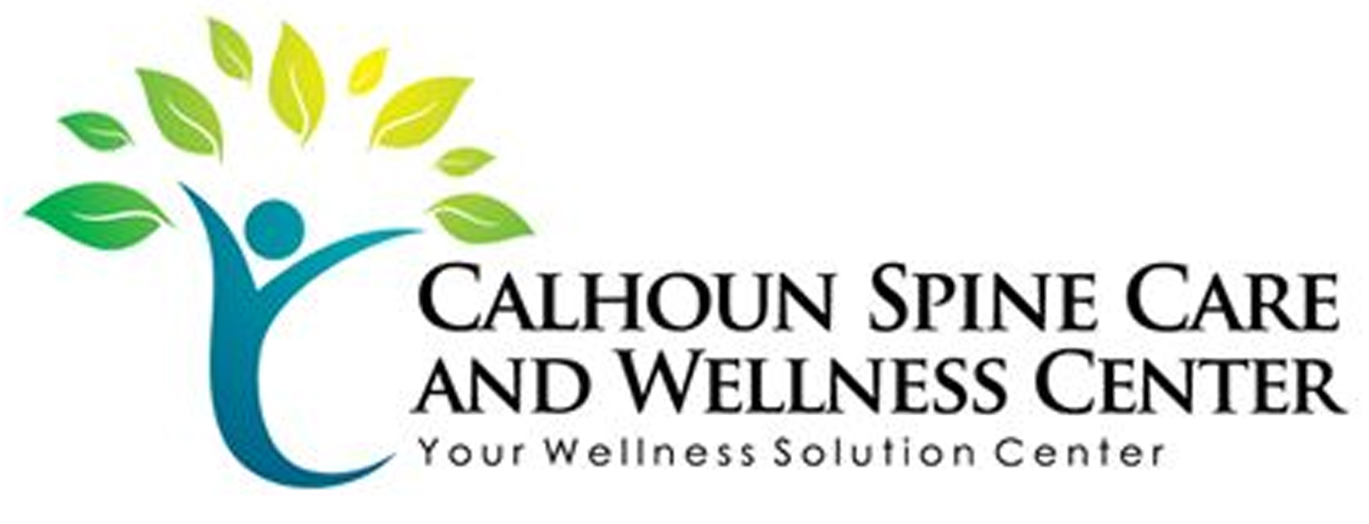If you're dealing with sciatica pain in Calhoun, you might be wondering what options are available to help alleviate your discomfort. From chiropractic care to physical therapy, various local resources can offer tailored approaches to manage your symptoms. You may also find relief through alternative therapies like acupuncture or yoga, which focus on enhancing your overall well-being. As you navigate these possibilities, consider what might work best for you, and explore the specific benefits they can provide. The journey to relief often involves more than just one method—let's explore what could be the best fit for your situation.
Understanding Sciatica Pain
Sciatica pain affects millions of people, making it a common yet often misunderstood condition. If you've ever experienced sharp, shooting pain that radiates from your lower back down through your leg, you know just how debilitating it can be. This discomfort isn't just a simple ache; it's a signal from your body that something's not right. You might find it difficult to sit, stand, or even walk without feeling that nagging pain.
Understanding sciatica is vital for managing it effectively. The pain typically originates from irritation or compression of the sciatic nerve, which runs from your lower back down to your feet. While many people associate sciatica with back pain, it's important to recognize that the pain can vary widely. You might feel a burning sensation, numbness, or tingling in your leg, and it can affect one side of your body more than the other.
The intensity of sciatica pain can range from mild to severe, and it can come and go, impacting your daily activities. You might find that certain positions or movements exacerbate the pain, while others provide temporary relief. Recognizing these patterns can help you manage your symptoms more effectively.
While sciatica can be frustrating and uncomfortable, it's important to remain proactive about your health. Understanding your pain is the first step toward finding relief and improving your quality of life. Paying attention to your body and seeking appropriate treatment can lead you on the path to recovery.
Common Causes of Sciatica
When it comes to sciatica, understanding the common causes is essential for finding relief.
Herniated discs, spinal stenosis, and muscle imbalances can all contribute to the pain you're experiencing.
Let's explore how each of these factors plays a role in your discomfort.
Herniated Discs Explained
Herniated discs are often a significant contributor to the discomfort of sciatica, as they can press on the sciatic nerve and cause pain that radiates down your leg.
When the soft inner gel of a disc bulges out through a tear in the tougher outer layer, it can irritate nearby nerves. This condition is common, especially in individuals over 30, as natural wear and tear can weaken the discs over time.
You might experience sharp pain, numbness, or tingling in your leg or foot due to this nerve compression. Activities like heavy lifting, sudden twisting, or even prolonged sitting can exacerbate the problem.
If you notice pain that worsens with movement or certain positions, it could be a sign of a herniated disc.
Diagnosis typically involves physical exams and imaging tests like MRIs. Treatment options may include physical therapy, medications, or, in severe cases, surgery.
Understanding the role of herniated discs in sciatica is essential for effective management. By learning more about this condition, you can take proactive steps toward relief and regain your quality of life.
Spinal Stenosis Overview
Spinal stenosis can be a hidden culprit behind your sciatica pain, as it narrows the spaces within your spine, putting pressure on the spinal cord and nerves. This condition often develops gradually, typically due to age-related changes like arthritis, which can lead to the thickening of ligaments and the formation of bone spurs.
If you're experiencing tingling, numbness, or weakness in your legs, spinal stenosis might be the reason.
You might also encounter sciatica symptoms when the narrowing occurs in the lumbar region, where the sciatic nerve roots exit the spine. As the available space decreases, the surrounding structures can compress these nerves, causing discomfort that radiates down your leg.
Activities like walking or standing may worsen your symptoms, while sitting or bending forward can provide temporary relief.
Diagnosing spinal stenosis usually involves imaging tests, like X-rays or MRIs, to assess the degree of narrowing and its impact on the nerves.
Treatment options vary, from physical therapy and medications to more invasive procedures like injections or surgery, depending on the severity of your condition.
Understanding spinal stenosis can be the first step toward finding effective relief for your sciatica pain.
Muscle Imbalances Impact
Muscle imbalances can greatly contribute to sciatica pain, often stemming from factors like poor posture, sedentary lifestyles, or repetitive movements. When certain muscles are stronger or tighter than their opposing muscles, they can pull your spine and pelvis out of alignment. This misalignment puts pressure on the sciatic nerve, leading to pain, numbness, or tingling that radiates down your leg.
If you sit for long hours without proper support, your hip flexors might become tight while your glutes weaken. This imbalance can exacerbate discomfort in your lower back and hips.
Similarly, if you consistently engage in repetitive motions—like lifting improperly or favoring one side during activities—you might create further imbalances that aggravate the sciatic nerve.
To address these imbalances, you should incorporate strength training and flexibility exercises into your routine. Focusing on core stability, hip strength, and proper stretching can help restore balance.
Additionally, being mindful of your posture while sitting and standing can prevent imbalances from worsening. By actively working to correct these issues, you can alleviate pressure on the sciatic nerve and reduce your pain.
Symptoms of Sciatica
When it comes to recognizing sciatica, you may notice a range of symptoms that can vary in intensity. The most common symptom is pain that starts in your lower back and radiates down through your buttock and along the leg. This pain can feel sharp, burning, or even dull, and it may worsen when you sit, stand, or move in certain ways.
You might also experience tingling or numbness in the affected leg or foot. This sensation can be quite uncomfortable, and it may feel like pins and needles. In some cases, you could find it difficult to move your leg or foot due to muscle weakness, making everyday activities a challenge.
Another symptom to watch for is a feeling of heaviness in the affected leg. You may notice that your leg feels unusually fatigued, especially after prolonged standing or walking.
In more severe cases, sciatica can lead to bladder or bowel dysfunction, which requires immediate medical attention.
It's important to pay attention to your body and how these symptoms affect your daily life. If you're experiencing any of these signs, you should consult a healthcare professional for a proper diagnosis.
Early recognition and intervention can help prevent the condition from worsening, allowing you to regain comfort and mobility. Remember, understanding your symptoms is the first step toward finding relief from sciatica pain.
Benefits of Physical Therapy
Physical therapy offers targeted techniques that can considerably relieve your sciatica pain.
You'll notice improvements in your mobility and strength, making daily activities easier and more comfortable.
Targeted Pain Relief Techniques
Sciatica pain can be debilitating, but the right targeted pain relief techniques, particularly through physical therapy, can make a significant difference. One of the most effective methods involves manual therapy, where your physical therapist uses hands-on techniques to relieve pressure on the sciatic nerve. This approach not only alleviates pain but also improves circulation, helping to promote healing.
Additionally, specific therapeutic exercises designed to stretch and strengthen your back and leg muscles can target the root cause of your discomfort. Your therapist will guide you through these exercises, ensuring you're using the correct form to avoid further injury.
They may also incorporate modalities such as heat or ice therapy to reduce inflammation and ease pain.
Another technique is electrical stimulation, where gentle electrical impulses help to reduce pain and muscle spasms. This targeted approach can provide immediate relief, allowing you to engage in your rehabilitation more effectively.
Lastly, your therapist will educate you on proper body mechanics and posture, helping you avoid activities that might exacerbate your sciatica.
Improved Mobility and Strength
Improving mobility and strength is an essential part of your recovery journey from sciatica pain. Physical therapy focuses on exercises that enhance your flexibility, balance, and overall strength. When you engage in these targeted activities, you're not just easing your current discomfort; you're also preventing future flare-ups.
During your sessions, a trained therapist will guide you through specific movements designed to strengthen your core and lower back muscles. This added strength helps support your spine better, alleviating pressure on the sciatic nerve.
You'll notice improvements in your ability to perform daily tasks, whether it's bending to pick something up or walking without discomfort.
Moreover, as your mobility improves, you'll likely experience increased energy levels and a better mood. Regular physical activity releases endorphins, which act as natural painkillers.
In addition, your therapist will teach you proper body mechanics to guarantee you're moving in ways that protect your back.
Role of Chiropractic Care
When it comes to managing sciatica pain, chiropractic care offers a hands-on approach that can greatly alleviate discomfort. By focusing on spinal adjustments, chiropractors help realign your spine and reduce nerve irritation, which can be a significant source of your pain. This alignment not only improves your range of motion but also promotes better overall function of your nervous system.
During your visits, the chiropractor will assess your posture and movement patterns to identify any underlying issues contributing to your sciatica. They'll tailor a treatment plan that may include spinal manipulations, soft tissue therapy, and specific exercises designed to strengthen your back and core. These adjustments can relieve pressure on the sciatic nerve, helping you experience less pain and improved mobility.
You might also benefit from lifestyle recommendations that include ergonomic changes, stretching exercises, and posture corrections. Your chiropractor can guide you on how to maintain a healthy spine and prevent future flare-ups. Many patients find that regular chiropractic sessions not only provide immediate relief but also contribute to long-term wellness.
Incorporating chiropractic care into your pain management strategy can be a game changer. It empowers you to take an active role in your recovery, helping you reclaim your daily activities without the burden of sciatica pain.
If you're looking for an effective, non-invasive option for relief, consider scheduling an appointment with a chiropractor to explore how they can support your healing journey.
Medications for Pain Relief
For many individuals dealing with sciatica pain, medications can provide much-needed relief. Over-the-counter pain relievers, such as ibuprofen or acetaminophen, often serve as the first line of defense. They can help reduce inflammation and alleviate discomfort, enabling you to go about your daily activities with greater ease.
If over-the-counter options don't cut it, your healthcare provider may prescribe stronger medications. Muscle relaxants can be effective if muscle spasms accompany your pain. These can help ease tightness and improve your mobility.
Additionally, certain anti-inflammatory medications may be suggested to directly target inflammation around the sciatic nerve.
In some cases, your doctor might recommend corticosteroids, either as oral medications or injections. These can provide powerful relief by reducing inflammation in the affected area, but they're typically used for short durations to avoid potential side effects.
For chronic pain that doesn't respond to other treatments, your doctor might explore opioid medications. While these can effectively relieve severe pain, they carry a risk of dependency and are generally prescribed with caution.
Always consult your healthcare provider to determine the best medication for your specific situation. They'll consider your medical history, the severity of your pain, and any potential interactions with other medications you might be taking.
Ultimately, the right medication can help you reclaim your life and manage sciatica pain effectively.
Home Remedies and Lifestyle Changes
Medications can provide temporary relief from sciatica pain, but incorporating home remedies and lifestyle changes can offer long-term benefits.
By making some simple adjustments to your daily routine, you can help alleviate discomfort and promote healing.
Here are some effective home remedies and lifestyle changes you can try:
- Stretching exercises: Incorporate gentle stretches for your lower back and legs to relieve tension and improve flexibility.
- Hot and cold therapy: Use a heating pad or ice pack on the affected area to reduce inflammation and ease pain.
- Maintain good posture: Pay attention to your posture while sitting, standing, or lifting to prevent strain on your spine.
- Stay active: Engage in low-impact activities like walking, swimming, or yoga to strengthen your back muscles and improve circulation.
- Healthy weight management: Keeping a healthy weight can reduce pressure on your spine and lower your risk of sciatica flare-ups.
In addition to these remedies, consider creating a supportive environment.
Use ergonomic furniture, take regular breaks from sitting, and guarantee your sleeping position supports your spine.
Alternative Therapies to Consider
Many individuals seek alternative therapies to complement traditional treatments for sciatica pain. These options can help alleviate discomfort and enhance your overall well-being.
One popular choice is acupuncture, which involves inserting thin needles into specific points on your body. This method may help relieve pain and promote healing by stimulating your nervous system.
Chiropractic care is another effective alternative. Chiropractors focus on spinal adjustments to improve alignment and reduce nerve irritation. Regular visits can help restore mobility and lessen pain associated with sciatica.
Physical therapy isn't just for recovering from injuries—it can also be a valuable resource for managing sciatica. A trained therapist can guide you through exercises that strengthen your core, improve flexibility, and alleviate tension in your lower back and legs.
Yoga is another excellent option. Practicing yoga can enhance your posture, increase strength, and promote relaxation. Many individuals find specific poses beneficial for relieving sciatic pain, such as the pigeon pose and child's pose.
Just make sure to consult with a knowledgeable instructor who understands your condition.
Lastly, consider herbal remedies and supplements. Turmeric, willow bark, and devil's claw have anti-inflammatory properties that may help with pain relief. Always consult your healthcare provider before trying new supplements to verify they're safe for you.
Incorporating these alternative therapies into your routine can offer relief and improve your quality of life.
When to Seek Professional Help
If your sciatica symptoms persist or worsen, it's time to seek professional help.
Difficulty with daily activities can be a sign that your condition needs expert attention.
Don't hesitate to reach out for guidance and support to manage your pain effectively.
Persistent or Worsening Symptoms
Persistent or worsening symptoms of sciatica can be alarming and may indicate a more serious underlying issue. It's crucial to recognize when it's time to seek professional help.
If you're experiencing any of the following, don't hesitate to contact a healthcare provider:
- Severe pain that doesn't improve with rest or over-the-counter medications.
- Numbness or weakness in your legs, especially if it's affecting your ability to walk.
- Loss of bladder or bowel control, which could signal a medical emergency.
- Pain that radiates down both legs, suggesting potential complications.
- Symptoms that last longer than a few weeks, indicating that self-care may not be enough.
These signs shouldn't be ignored. Seeking help early can prevent further complications and guarantee you receive the appropriate treatment.
Remember, you know your body best—if something feels off, trust your instincts and reach out for advice. Addressing sciatica early can lead to more effective relief and a quicker return to your daily activities.
Don't wait until the pain becomes unbearable; take action when you notice these persistent or worsening symptoms.
Difficulty With Daily Activities
Experiencing difficulty with daily activities due to sciatica can be frustrating and debilitating. You might find it challenging to perform simple tasks like bending, lifting, or even sitting for extended periods.
When pain interferes with your routine, it's vital to evaluate your situation. If you notice that everyday actions, such as walking or climbing stairs, become increasingly painful, it's time to think about seeking professional help.
Ignoring these symptoms can lead to further complications or long-lasting issues. If your pain persists for more than a few days or worsens despite home treatments like rest and over-the-counter medications, don't hesitate to consult a healthcare professional. They can evaluate your condition, recommend effective treatment options, and help you regain your quality of life.
Additionally, if you experience symptoms like numbness or weakness in your legs, or any loss of bladder or bowel control, seek immediate medical attention. These could indicate a more serious underlying problem.
Local Resources in Calhoun
Calhoun offers a variety of local resources to help you manage sciatica pain effectively.
Whether you're looking for professional treatment or self-care options, you'll find plenty of support in your community.
Here's a quick rundown of what's available:
- Chiropractic Clinics: Several clinics in Calhoun specialize in spinal adjustments that can alleviate nerve pressure, helping to reduce your pain.
- Physical Therapy Centers: Local physical therapists can create personalized exercise programs designed to strengthen your back and improve mobility.
- Pain Management Specialists: You can consult with specialists who focus specifically on chronic pain, offering tailored treatment plans that may include medications or injections.
- Community Health Classes: Look for workshops on pain management techniques, yoga, or stretching exercises to help manage your symptoms at home.
- Support Groups: Connecting with others facing similar challenges can be incredibly helpful. Check out local support groups for shared experiences and coping strategies.
Conclusion
In Calhoun, finding relief from sciatica pain is within your reach. By exploring local resources like chiropractic care, physical therapy, and alternative therapies, you can take proactive steps toward managing your discomfort. Remember to incorporate home remedies and lifestyle changes to enhance your recovery. If your pain persists or worsens, don't hesitate to seek professional help. With the right support and strategies, you can improve your quality of life and get back to doing what you love.



